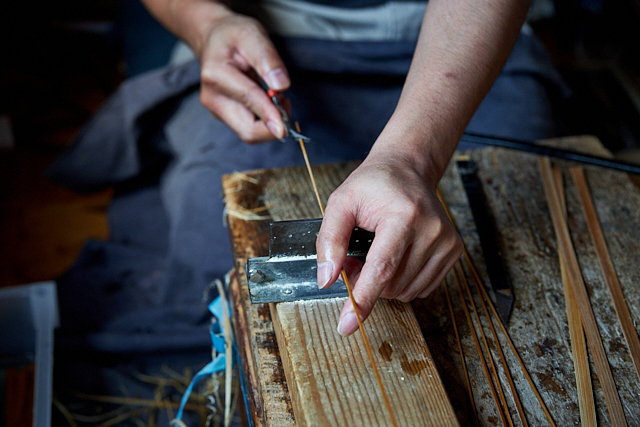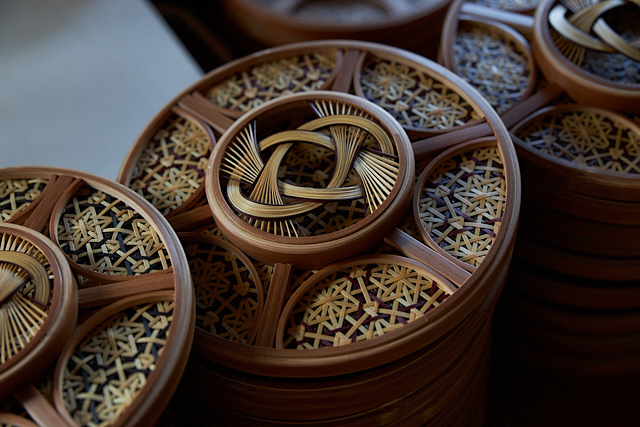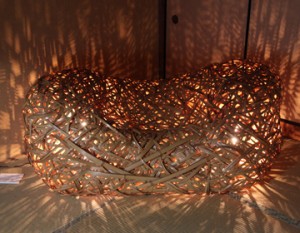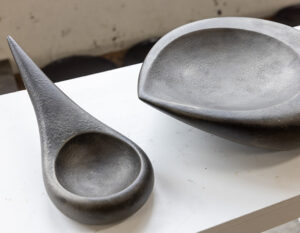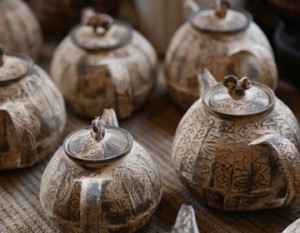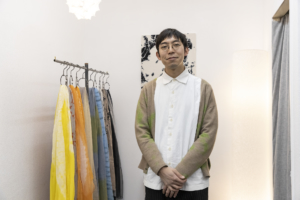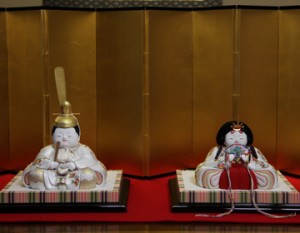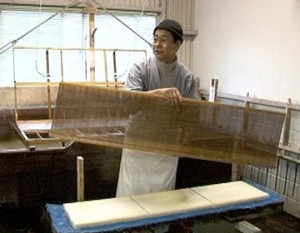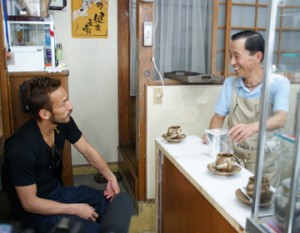Suruga bamboo stripe work made with a unique technique
It is said that there are about 600 species of bamboo living in Japan. Because bamboo grows faster than other plants and can be used after only three years, and because of its superior strength and elasticity, it has supported Japanese life since ancient times, taking many forms, from daily necessities such as baskets, colanders, and chopsticks to farming tools and interior decorations. Bamboo crafts can be found in all regions of Japan, with flower baskets, tea bowl baskets, colanders, etc. as their origins, but the origin of Suruga bamboo sen-suji-zaiku in Shizuoka is said to be that Ieyasu Tokugawa had feeding boxes made for hawk hunting. Later, the number of shops selling insect baskets, paintbrushes, flower baskets, and other items increased. The characteristic of Suruga Bamboo Sen-suji-zaiku is that it is very detailed. While in other places, flat bamboo strips of 1.2 to 1.6 mm in diameter are generally made and woven, Suruga Bamboo Suji-zaiku uses round strips of bamboo split lengthwise and made into sticks of a specific width and thickness. The thickness of the bamboo is 0.3 to 0.4 mm, which is quite thin. The technique of bending bamboo by applying heat and the unique jointing technique are also different from bamboo crafts in other regions. In the Meiji period (1868-1912), bamboo crafts were exhibited as Japanese specialties at an international exposition held in Vienna, and the delicate atmosphere created by the bamboo strips and the unique techniques of Oriental bamboos were more popular than those of Western countries, leading to the export of many products overseas.
Suruga Bamboo Sen-suji-zaiku is said to have “a thousand bamboo stripes within a three-foot span. While other production centers “weave” bamboo, here we “assemble” it. Unlike other bamboo crafts that developed from farming tools, this style of bamboo crafting is said to have started with insect cages to hold bellbugs.
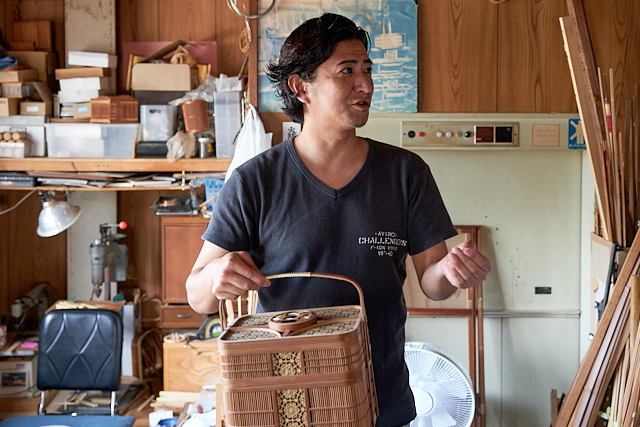
Bamboo crafts are popular as bags for enjoying the seasons
Mr. Sugiyama is the third son of a Suruga bamboo Sen-suji-zaiku craftsman. After graduating from high school, he worked at a doll store in Osaka before studying under Tetsuo Watanabe, a traditional craftsman of “Suruga Bamboo Sen-suji-zaiku” and inheriting the traditional techniques. Sugiyama’s work has been used in high-class hotels and inns, and his collaboration with a lighting artist won the Minister of Economy, Trade, and Industry Award at the National Traditional Crafts Competition. The workshop is lined with a variety of bamboo works, including insect cages, wind chimes, and the company’s namesake andon lanterns. The most eye-catching among them are bags that look like they are about twice the size of an insect cage.
Bags have been popular for the past few years. It seems that many of the younger generation are buying them. Some people say that bamboo bags can only be used in summer, but I think that’s fine. I think it is fine to have bags that can be enjoyed in any season. Bamboo crafts peak after 10 or 20 years. It will change to a very nice color. Classic cars are more fun than the latest cars, aren’t they? It is also chic to enjoy the inconvenience of bamboo crafts that can only be used in summer,” says Sugiyama. It is also a good idea to enjoy the way the texture changes over time. While preserving traditional techniques, they evolve with the times. In this way, the tradition of Suruga Bamboo Sen-suji-zaiku will be handed down to the next generation.
